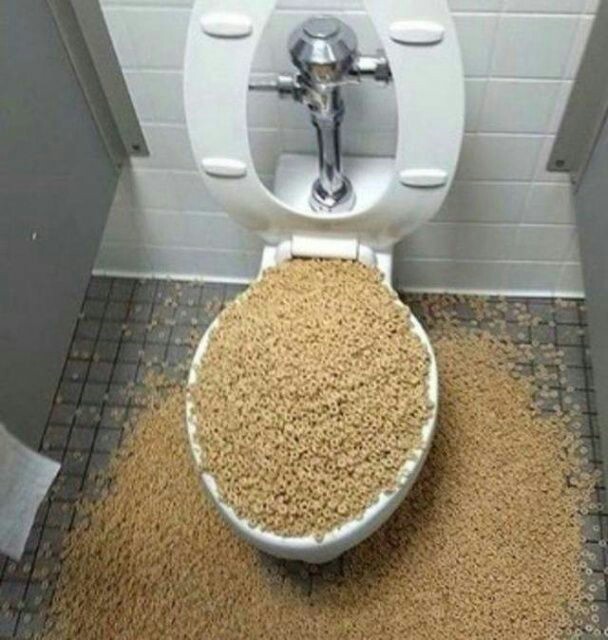Are You Permitted to Dispose of Food Waste in the Toilet?
Are You Permitted to Dispose of Food Waste in the Toilet?
Blog Article
The content underneath pertaining to What Can Happen If You Flush Food Down the Toilet? is quite informative. Check it out for your own benefit and figure out what you think about it.

Intro
Many people are commonly confronted with the dilemma of what to do with food waste, particularly when it comes to leftovers or scraps. One usual inquiry that develops is whether it's alright to flush food down the commode. In this write-up, we'll explore the reasons that people could think about flushing food, the consequences of doing so, and alternative techniques for proper disposal.
Reasons people might consider purging food
Lack of awareness
Some individuals might not understand the prospective damage caused by flushing food down the commode. They might wrongly believe that it's a safe practice.
Comfort
Flushing food down the toilet might appear like a quick and very easy option to throwing away unwanted scraps, particularly when there's no neighboring garbage can available.
Laziness
In many cases, individuals may just select to flush food out of large negligence, without thinking about the consequences of their activities.
Repercussions of flushing food down the toilet
Environmental influence
Food waste that ends up in waterways can add to pollution and injury aquatic ecological communities. Furthermore, the water utilized to flush food can stress water sources.
Pipes concerns
Purging food can bring about blocked pipes and drains pipes, causing pricey plumbing repair work and troubles.
Sorts of food that ought to not be flushed
Fibrous foods
Foods with coarse structures such as celery or corn husks can get tangled in pipelines and trigger obstructions.
Starchy foods
Starchy foods like pasta and rice can absorb water and swell, bring about blockages in pipelines.
Oils and fats
Greasy foods like bacon or food preparation oils should never ever be purged down the commode as they can solidify and trigger obstructions.
Correct disposal approaches for food waste
Making use of a waste disposal unit
For homes outfitted with waste disposal unit, food scraps can be ground up and flushed with the plumbing system. Nevertheless, not all foods appropriate for disposal in this manner.
Recycling
Certain food packaging materials can be reused, decreasing waste and reducing environmental influence.
Composting
Composting is an environment-friendly way to dispose of food waste. Organic materials can be composted and used to improve dirt for horticulture.
The significance of appropriate waste management
Lowering environmental injury
Appropriate waste administration methods, such as composting and recycling, aid lessen pollution and protect natural resources for future generations.
Protecting plumbing systems
By preventing the practice of flushing food down the toilet, house owners can protect against expensive plumbing repairs and preserve the stability of their plumbing systems.
Conclusion
Finally, while it might be alluring to purge food down the bathroom for ease, it is essential to understand the prospective consequences of this activity. By embracing proper waste management techniques and disposing of food waste properly, individuals can add to healthier plumbing systems and a cleaner environment for all.
FLUSH FOOD DOWN THE TOILET?
FLUSHING FOOD CAN CAUSE BLOCKED DRAINS IN YOUR HOME
All of the plumbing fixtures in your home are connected to the same sewer pipe outside of your home. This outdoor sewer pipe is responsible for transporting all the wastewater from your home to the Council sewer mains. Even small pieces of food that go down the kitchen sink can cause problems for your sewer. It should therefore be obvious that flushing larger bits of food, such as meat, risks a clog in either the toilet itself or the sewer pipes. Flushing greasy food is even more problematic because oil coagulates when it cools, coating the interior lining of your pipes.
THE TOILET IS NOT A BIN
Food isn’t the only thing that people shouldn’t be flushing down the toilet. People use the toilet to dispose of all kinds of things such as tampons, makeup wipes, dental floss, kitty litter and even underwear. Water goes to great lengths to educate residents about the high costs and stress placed on wastewater treatment systems simply from people flushing the wrong stuff down the toilet. It costs taxpayers millions of dollars each year, and homeowners thousands in blocked drain repairs.
FLUSHING FOOD IS A WASTE OF WATER
Flushing food is a waste of our most precious resource - water. In June this year Level 1 water restrictions were introduced to protect water supply from drought conditions. Much of New South Wales continues to be affected by prolonged drought with recent figures revealing up to 97 per cent of the state remains in drought. Depending on whether you have a single or dual flush toilet, every single flush uses between five and 11 litres of water. In the current climate this is a huge amount of water to be wasting on flushing food that should be placed in the bin (or better yet, the compost).
https://www.jabplumbingsolutions.com.au/blog/can-you-flush-food-down-the-toilet

I recently found that piece of writing about What Can Happen If You Flush Food Down the Toilet? while browsing on the search engines. Loved our entry? Please quickly share it. Let somebody else find it. I thank you for your readership.
Go Deal Report this page